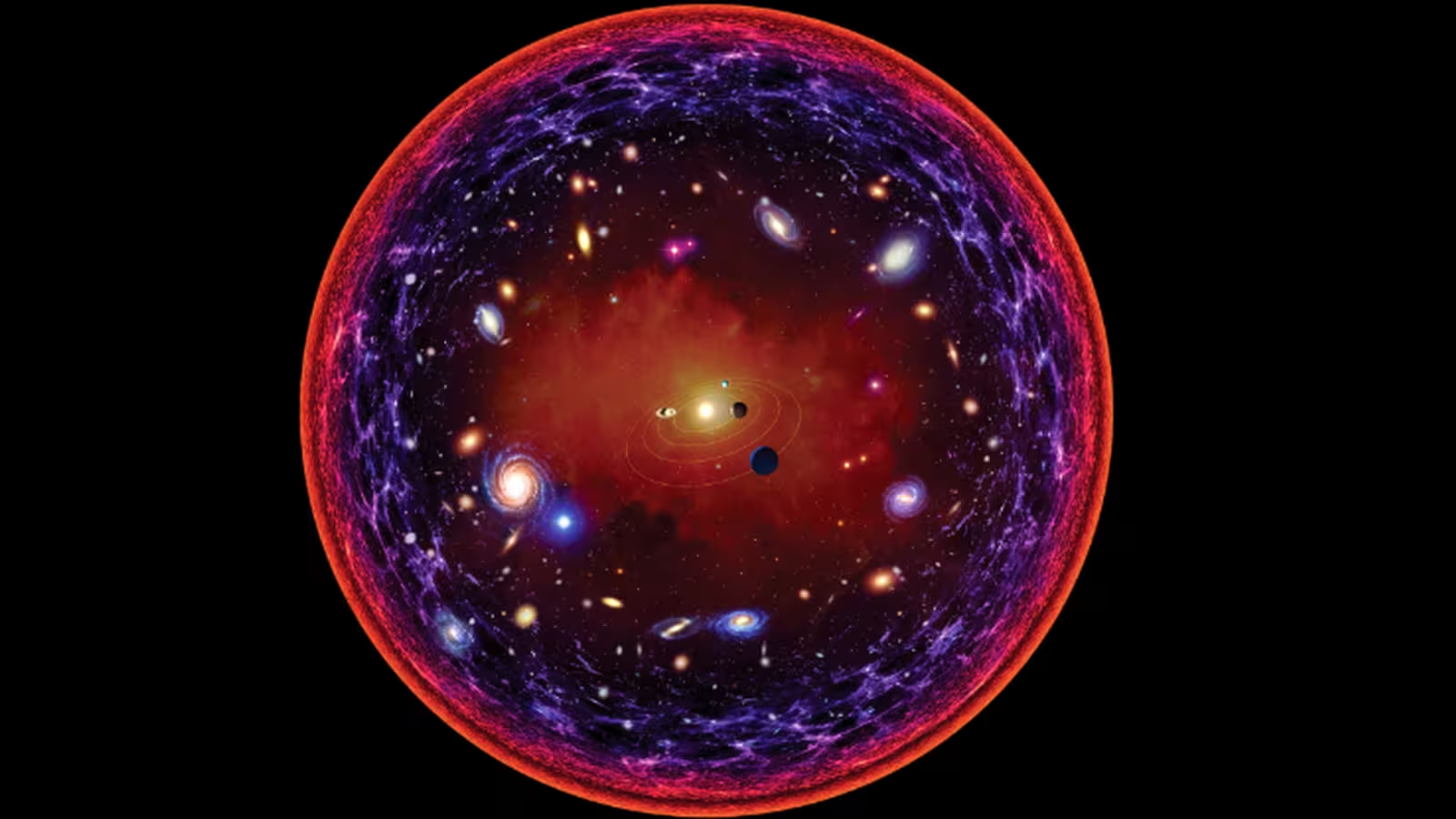6 Minutes
The Curious Case of the Universe’s Center
For centuries, the idea that the cosmos must have a central point was taken for granted. However, modern cosmology—drawing from Albert Einstein’s groundbreaking theory of general relativity—has turned this assumption upside down. Contrary to everyday intuition and popular analogies, the Universe does not have a center. Understanding why requires us to rethink the very nature of space, cosmic expansion, and the geometry that describes our Universe.
Einstein’s Theory and the Birth of Modern Cosmology
In 1915, Einstein introduced his theory of general relativity, revolutionizing physics by describing gravity as the result of curvature in space-time—an interconnected fabric of space and time. At first, even Einstein assumed the Universe was static: eternal, unchanging in its grandest dimensions. He famously introduced a mathematical fudge factor, the cosmological constant, to support a static Universe model.
But observations made in the early 20th century began to undermine this static picture. Astronomers, leveraging increasingly powerful telescopes, noticed that distant galaxies appeared to be receding from the Milky Way. This implied cosmic expansion—a radical departure from the idea of a timeless Universe. Notable among these discoveries was Edwin Hubble’s analysis of galaxy redshifts, which revealed that galaxies move away from each other at velocities proportional to their distances. In essence, the Universe is expanding everywhere, not from a single starting point.
Understanding Expansion: What Gets Bigger?
On Earth, expansion usually means something grows larger in size. In the context of the cosmos, expansion has a more precise definition: the distances between galaxies increase over time because space itself stretches. This key distinction is essential—galaxies are not flying outward through space like debris from an explosion; instead, space is expanding, uniformly carrying galaxies apart.
Astronomers often use the analogy of a balloon with dots representing galaxies. As the balloon inflates, the dots move apart, not because they are moving over the balloon’s surface, but because the underlying surface itself expands. Crucially, every dot observes other dots receding, regardless of its position. This means there is no privileged point or center on the balloon's surface—mirroring how our Universe lacks an absolute center from which expansion unfolds.
This concept aligns with what is known as the cosmological principle: from any vantage point in the Universe, cosmic expansion looks essentially the same. No single region is special; there is no cosmic center or edge. Every observer sees other galaxies receding, and the farther away a galaxy lies, the faster it appears to be moving away—an effect encapsulated in Hubble’s Law.
Big Bang Misconceptions: Was There a Center?
A frequent misconception is to picture the Big Bang as an explosion marking a specific location in pre-existing space. In reality, the Big Bang was not an explosion dispersing matter through space, but rather an expansion of space itself from an incredibly hot and dense initial state. Every location in today’s Universe emerges from this singular early event, making every place equally ancient and equally central.
Instead of being a colossal detonation with a blast center, the Big Bang describes the simultaneous genesis of space, time, and matter everywhere. When we study the cosmic microwave background—the ancient afterglow of the Big Bang—we see uniformity across all directions, reinforcing the absence of any central location.
Dimensions and the Limits of Analogy
While the balloon analogy offers intuitive grip, it is important to recognize its limitations. The Universe is not an expanding three-dimensional sphere embedded in higher-dimensional space. Our Universe encompasses three dimensions of space (length, width, height) plus time as a fourth dimension, all merged into what physicists call “space-time.”
Visualizing these four dimensions is challenging. Unlike the two-dimensional surface of a balloon, which we can easily imagine within three-dimensional space, space-time cannot be illustrated in higher dimensions we experience. Nonetheless, in mathematical cosmology, the concept of an edge or center to the Universe does not exist; the Big Bang occurred everywhere, and expansion happens everywhere equally.

What Drives the Universe’s Expansion?
Our understanding of cosmic expansion rests not only on observation but on mathematical frameworks provided by general relativity. The expansion rate is described by the Friedmann equations, which link the geometry of the Universe to its energy content—including dark energy and dark matter, two of the most enigmatic components in modern astrophysics. While the visible matter is only a small fraction, dark energy is commonly believed to fuel the accelerating expansion, though what exactly propels the growth of space remains a profound open question.
As the expansion continues, the metric that defines distances on cosmic scales itself changes, so galaxies that are gravitationally unbound drift apart over cosmological timescales. Importantly, this means if we ask, "Where is the Universe’s center?" the scientific answer is that there isn’t one—every point is as central as any other.
Expert Perspectives and the Ongoing Quest
Many physicists and astronomers have elaborated on why searching for the Universe's center is a misleading project. As astrophysicist Stephen Hawking explained, "The Universe has no center and no edge. Every point can be regarded as the center from its own perspective." This insight challenges not only our spatial intuitions but also our deeply held notions of uniqueness and location in the cosmos.
Research continues into refining our cosmological models and interpreting cosmic microwave background data, as well as understanding the elusive nature of dark energy. Advanced missions such as the James Webb Space Telescope and planned observatories like Euclid and the Nancy Grace Roman Space Telescope will probe the structure and fate of cosmic expansion, helping to clarify unsolved mysteries about the geometry and destiny of the Universe.
Related Technologies and Future Prospects
The quest to map the cosmos and unravel its origin drives innovations in astrophysical instrumentation, data analytics, and theoretical physics. High-resolution sky surveys, next-generation gravitational wave detectors, and advances in computational models all contribute to testing our concepts of cosmic expansion and the very fabric of the Universe.
Theoretical physicists continue to explore whether alternative interpretations—such as the multiverse hypothesis or cyclic universes—demand new mathematical tools or challenge established principles. All these developments underscore the vibrancy and dynamism of 21st-century cosmology.
Conclusion
Far from being anchored by a central point, the Universe’s expansion is everywhere, all at once—a phenomenon predicted by relativity, confirmed by observation, and encapsulated in modern cosmological theory. Understanding this lack of a center isn’t just an intellectual curiosity: it transforms how we see our place in the cosmos. As research progresses, our ongoing effort to comprehend the origin, structure, and fate of the Universe continues to reveal a reality more astonishing and interconnected than ever imagined.
Source: theconversation



Comments